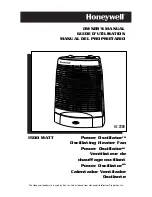
11
Battery Care
The useful life of the batteries installed in the Pack
Mule NXG vehicle will be longer if they are properly
cared for. Keep the following in mind:
• Place battery into service and complete a full
discharge and charge cycle. Check the electro-
lyte level, and add approved water (never acid) if
needed after this first cycle is completed.
• Never discharge the battery beyond 80%, and do
not use the battery if the specific gravity falls be-
low 1.150.
• During shipment or prolonged storage, the elec-
trolyte levels may fall below the separator pro-
tector. Keep electrolyte levels above the separa-
tor and
1/8
” (3.175mm) below the vent well. Water
batteries only as required and after a complete
charge and discharge cycle.
• Use only distilled or purified water, free of con-
taminants. (Contaminants in water may reduce
the chemical reaction causing a reduction in bat-
tery life.)
• Be sure to replace the vent caps after watering to
prevent electrolyte from spilling out.
• Keep the battery top clean and dry, and the vent
caps tightly sealed.
• Keep open flame and metal objects away from
the battery top.
• Keep the battery compartment open and well
ventilated during the charging cycle.
• Charge batteries after each day’s use.
Electrolyte Levels
The electrolyte levels should be carefully monitored
and maintained ½” (13mm) above the plates in each
cell. If the electrolyte level is too low, the plates will
be exposed to air and ruined beyond repair. If it is too
high, the electrolyte will be forced out of the battery
during the charge cycle.
Optional Battery Watering System
Pack Mule offers battery watering systems as an op-
tion for the Pack Mule NXG. This system provides a
fast, accurate, and safe way to maintain precise bat-
tery electrolyte levels.
Cleaning Batteries
For efficient operation, the battery tops and termi-
nals should be kept clean. The tops should be kept
free of dirt and debris.
Clean the batteries using a solution specifically for-
mulated to neutralize battery acid deposit or a solu-
tion of sodium bicarbonate (baking soda) and water.
Mix ¼ cup (60 mL) of sodium bicarbonate with 1½
gallons (6 L) of water. Apply the solution to the top
and sides of the batteries and allow the solution to
sit for three minutes. Thoroughly rinse the area with
low-pressure, clear water.
Battery Replacement
Care should be taken in removing and replacing
batteries. Each battery weighs approximately 70
pounds. Lifting the battery without using appropri-
ate equipment may cause injury.
To remove the battery, remove the 10-amp fuse
(Figure 10), remove the hold-down clamps and inter-
connected cables. Ensure that the battery fill caps are
securely attached. Then attach the lifting device and
remove the battery.
Connecting the Batteries
All configurations (24 v, 36 v and 48 v) of the Pack
Mule batteries are connected in series as shown in
Figure 12. The red wire is connected to the battery
positive input connection, the remainder of the bat-
teries are connected negative to positive, and the
black wire is attached to the last battery’s negative
connection. According to the voltage, your vehicle
may have eight batteries instead of six; however, the
series connection is the same.
Figure 12: The batteries connected in series.
Always wear proper safety equipment, includ-
ing safety goggles or a face shield when working
around batteries.
To protect against personal injury or equipment
damage, always use insulated tools when working
on an electric vehicle
Vehicles with on-board chargers have a tempera-
ture sensor attached to the negative terminal to pre-
vent overheating during recharge.
Содержание PC NXG Series
Страница 1: ...INDUSTRIAL ELECTRIC VEHICLE PC NXG and PCT NXG Series April 2017 ...
Страница 2: ......
Страница 4: ......
Страница 6: ......
Страница 46: ...40 Appendix H Transaxle PC Series ...
Страница 48: ...Appendix I Transaxle PCT Series Series ...
















































